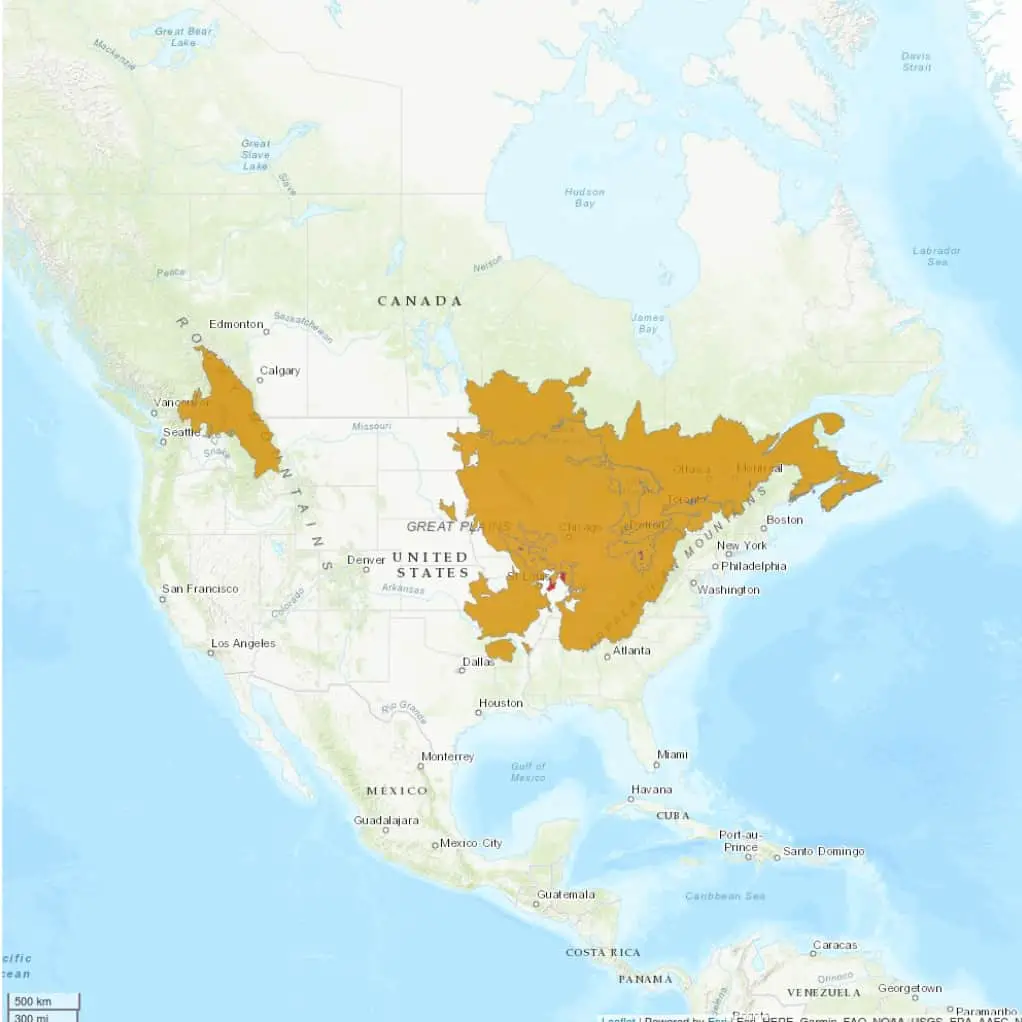If you’re a fishing enthusiast or simply curious about the habitats of aquatic creatures, you’ve likely wondered about the whereabouts of smallmouth bass. These feisty and cunning fish are known for their beautiful bronze coloration and remarkable agility. In this article, you will explore the diverse environments where smallmouth bass thrive, discovering their preferred haunts, from cool mountain streams to calm, secluded lakes. So grab your fishing gear and prepare to uncover the secrets of Where Do Smallmouth Bass Live.
Habitat Conditions
| Parameter | Description | Ideal Conditions |
|---|---|---|
| Water Temperature | Temperature range preferred by smallmouth bass | 60°F to 72°F (15.6°C to 22.2°C) |
| Water Quality | Clarity and pollutant levels | Clear water with low levels of contaminants |
| Substrate Preference | Type of lake or river bed | Rocky and gravel substrates |
| Aquatic Vegetation | Presence of plant life | Moderate (for cover and hunting) |
| Geographic Distribution | Common areas they are found | North America (specific regions) |
| Typical Depth | Depth at which they are usually found | Shallow waters: 3-15 feet (0.9-4.6 meters); Deeper waters: up to 20 feet (6.1 meters) |
| Current Preference | Water flow they thrive in | Slow to moderate currents |
| Diet | Common food sources | Small fish, crayfish, insects, etc. |
| Spawning Conditions | Requirements for breeding habitat | Rocky/gravel substrates, sheltered areas, good water quality |
| Human Impact | Effects of human activity on habitat | Pollution, habitat destruction, overfishing |
| Conservation Status | Current status and protection efforts | Varied (region-dependent); active efforts in habitat restoration and sustainable fishing practices |
Preferred Water Temperature
Smallmouth bass prefer cool water temperatures ranging between 60°F to 72°F (15.6°C to 22.2°C). They thrive in these temperature ranges but can tolerate slightly higher or lower temperatures if necessary.
Water Quality Requirements
Smallmouth bass requires good water quality to thrive. They thrive in clear water with a moderate level of turbidity. They are also sensitive to pollution and prefer water with low levels of contaminants such as heavy metals and pesticides. Additionally, they require well-oxygenated water to support their active lifestyle.
Preferred Substrate
Smallmouth bass prefer rocky substrates, including rock and gravel beds, for various purposes. These substrates provide them with shelter and protection from predators while also offering suitable nesting sites during the spawning season.
Aquatic Vegetation
While smallmouth bass are not heavily reliant on aquatic vegetation compared to other species, they do benefit from the presence of submerged aquatic plants. These plants provide cover for small fish and invertebrates, which are important prey items for smallmouth bass.
Geographic Distribution
North America
Smallmouth bass are native to North America and can be found in various regions throughout the continent. They are most commonly found in the eastern and central parts of the United States and Canada.
United States
Within the United States, smallmouth bass have a broad distribution. They can be found in numerous rivers, streams, lakes, and ponds across various states, including but not limited to Tennessee, Kentucky, Ohio, Pennsylvania, and Michigan.
Canada
In Canada, smallmouth bass can be found in several provinces, including Ontario, Quebec, Manitoba, and Saskatchewan. They inhabit numerous lakes and rivers throughout these regions.
Other Countries
Smallmouth bass have been introduced to various countries outside their native range, primarily for recreational fishing. These introduced populations can be found in countries such as Australia, New Zealand, and several European nations.
Freshwater Habitats
Rivers
Smallmouth bass are often found in rivers. They prefer rocky sections and areas with moderate flow. Rivers provide them with ample foraging opportunities and suitable habitat conditions.
Streams
Streams are another preferred habitat for smallmouth bass. Similar to rivers, they seek out rocky areas and locations with moderate flow. Streams offer them a diverse range of prey and suitable nesting sites during spawning.
Lakes
Lakes are a common habitat for smallmouth bass. They occupy both natural and man-made lakes, especially those with rocky shorelines and abundant underwater structures. Lakes provide them with larger foraging areas and a variety of prey opportunities.
Ponds
Smallmouth bass can also be found in ponds, particularly larger ponds that offer suitable habitat conditions. Ponds with rocky substrates and submerged vegetation can provide ample food sources and shelter for smallmouth bass.
Preferred Depth
Shallow Waters
Smallmouth bass are often found in shallow waters, particularly during the summer and fall seasons. They frequent areas with a depth of 3 to 15 feet (0.9 to 4.6 meters) for feeding and cover.
Deep Waters
Although smallmouth bass prefer shallow waters, they also venture into deeper areas in search of cooler temperatures. During hot summer months, they may retreat to depths of 20 feet (6.1 meters) or more.
Currents and Flow
Slow-Moving Currents
Smallmouth bass can adapt to slow-moving currents. They often utilize these areas for feeding and cover, particularly if there are suitable structures or vegetation to provide additional shelter.
Moderate Currents
Moderate currents are preferred by smallmouth bass. These currents provide oxygen-rich water, improved foraging opportunities, and suitable habitat conditions where they can thrive.
Fast-Moving Currents
Smallmouth bass can also tolerate fast-moving currents, although they are less common in such areas. They may utilize these currents for foraging or as transitional zones between different habitats.
Cover and Structure
Rock and Gravel Beds
Rock and gravel beds are ideal habitats for smallmouth bass. These areas provide them with shelter, nesting sites, and ample cover from predators. They also attract an abundance of prey species for smallmouth bass to feed on.
Logjams and Fallen Trees
Smallmouth bass are known to seek shelter and ambush prey among logjams and fallen trees. The structural complexity of these habitats offers protection and numerous hiding spots, making them attractive locations for smallmouth bass.
Weed Beds
While smallmouth bass are not highly dependent on aquatic vegetation, they can utilize weed beds for shelter, spawning sites, and as areas to hunt for smaller prey species.
Underwater Structures
Smallmouth bass are attracted to underwater structures such as submerged rocks, boulders, and submerged timber. These structures provide them with cover and create ideal hunting grounds where they can ambush their prey.

Feeding Grounds
Preferred Prey
Smallmouth bass are opportunistic predators and have a varied diet. They primarily feed on small fish, crayfish, insects, and other invertebrates. Additionally, they may target frogs, worms, and even small mammals when the opportunity arises.
Foraging Areas
Smallmouth bass tend to forage in areas with ample cover and structure, such as rock piles, submerged vegetation, and drop-offs. They may also concentrate near areas where prey is abundant, such as near weed beds or rocky shorelines.
Ambush Locations
Smallmouth bass are known for their ambush tactics. They often seek out locations with cover or structure where they can hide and surprise their prey. Logjams, fallen trees, and rock formations serve as excellent ambush locations for smallmouth bass.
Seasonal Movements
Spring
During the spring, smallmouth bass typically become more active and move towards shallower areas for spawning. They seek out suitable nesting substrates and warmer waters to prepare for the reproductive season.
Summer
In the summer, smallmouth bass tend to move into deeper waters to escape the hotter surface temperatures. They may also seek out areas with increased flow or cooler water, such as near springs or inflows.
Fall
During the fall, smallmouth bass may transition back to shallower waters as temperatures begin to cool. They become more aggressive in their feeding patterns, voraciously consuming prey before the onset of winter.
Winter
In winter, smallmouth bass become less active and often seek out deeper, dormant areas that offer more stable temperatures. They may become lethargic and conserve energy during this period until the arrival of spring.
Spawning Locations
Nesting Substrates
Smallmouth bass typically nest in areas with a rocky or gravel substrate. Females will lay their eggs on hard surfaces, such as rock ledges or gravel beds, where they can adhere and be protected until they hatch.
Optimal Water Conditions
During spawning, smallmouth bass prefer water conditions with good clarity and moderately warm temperatures. Adequate oxygen levels are crucial for the survival of the eggs, making well-oxygenated water essential.
Sheltered Areas
Smallmouth bass prefer sheltered areas for spawning to minimize predation risk. Rocky shorelines, coves, or areas with submerged vegetation offer the necessary protection for successful reproduction.

Human Impact and Conservation
Threats to Smallmouth Bass Habitat
Smallmouth bass habitats face various threats due to human activities. Pollution, including the release of contaminants and sedimentation, can degrade water quality and impact smallmouth bass populations. Additionally, habitat destruction caused by urbanization, agriculture, and dam construction can disrupt their natural habitats.
Conservation Efforts
Conservation efforts are crucial to ensure the long-term survival of smallmouth bass populations. Organizations and government agencies work to protect their habitats through water quality monitoring, restoration projects, and the establishment of fishing regulations. Additionally, educating the public about responsible fishing practices can promote sustainable management of smallmouth bass populations.




